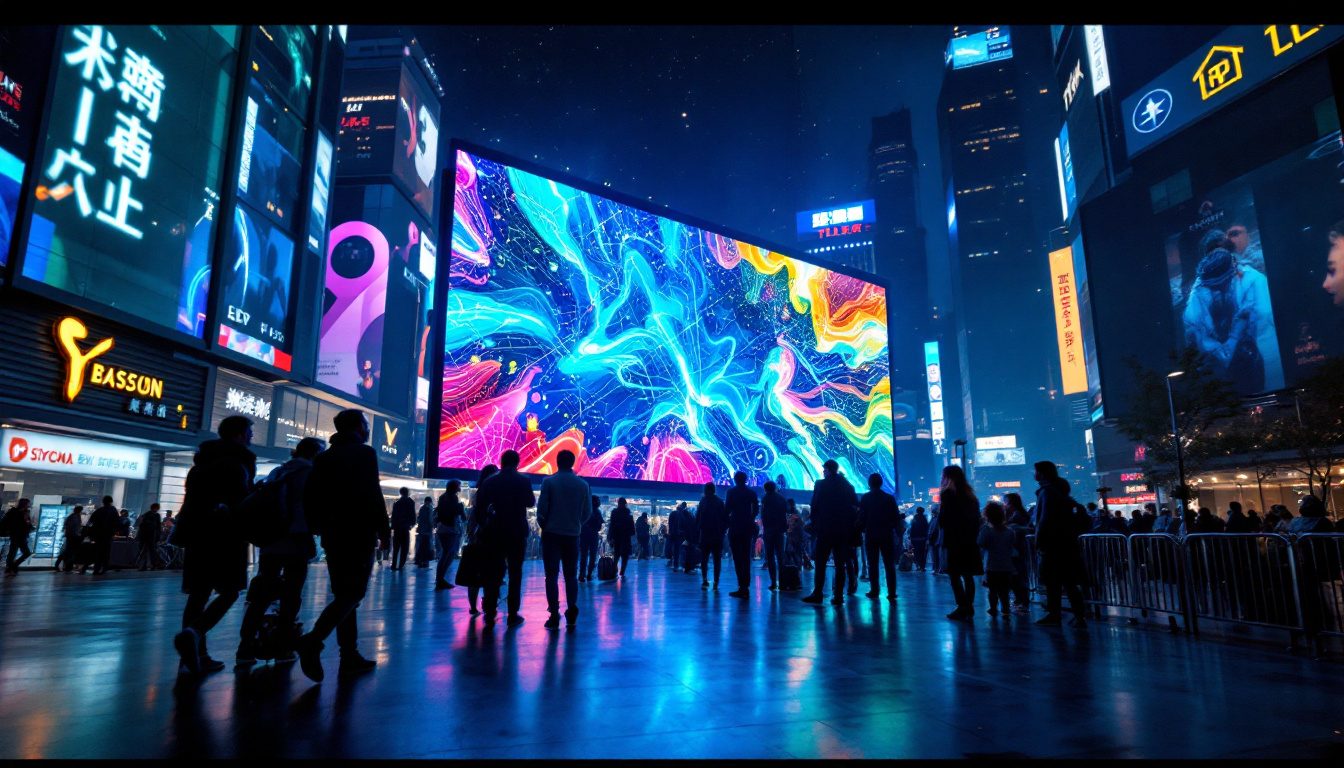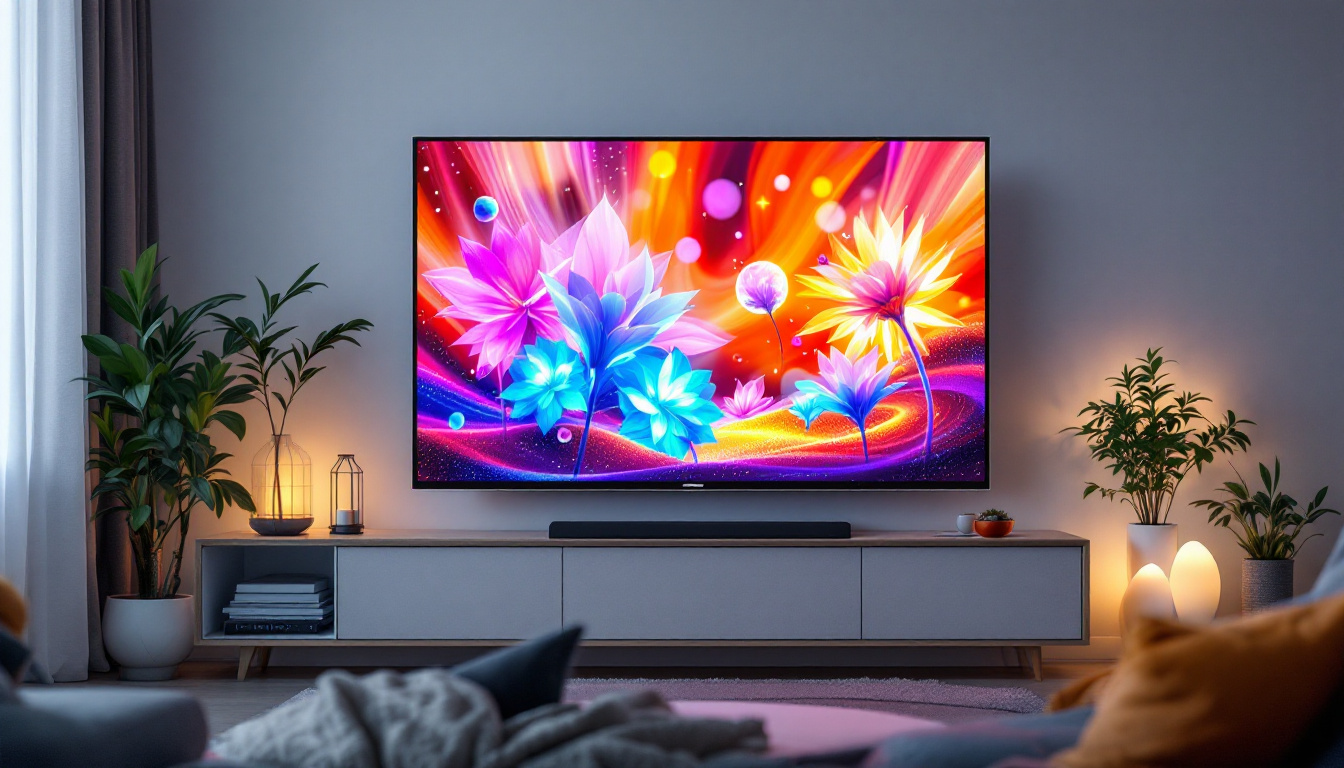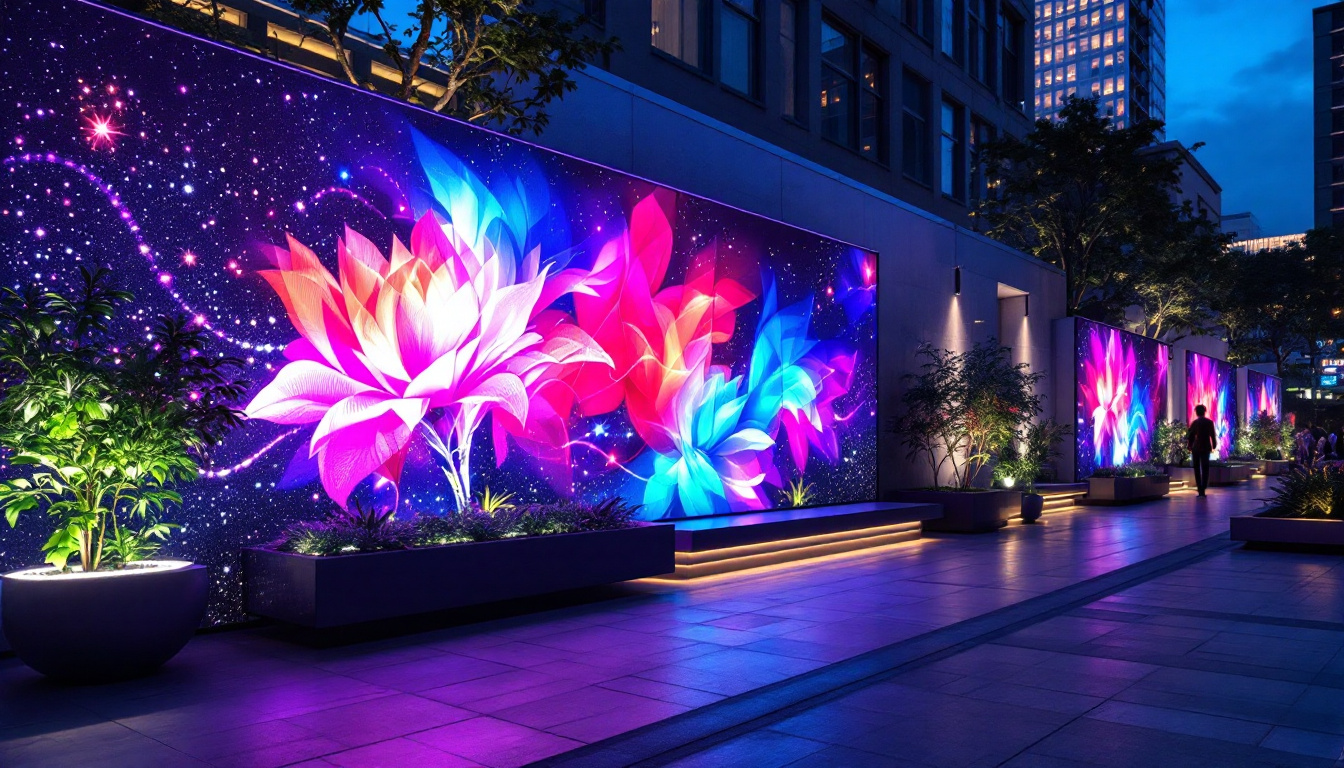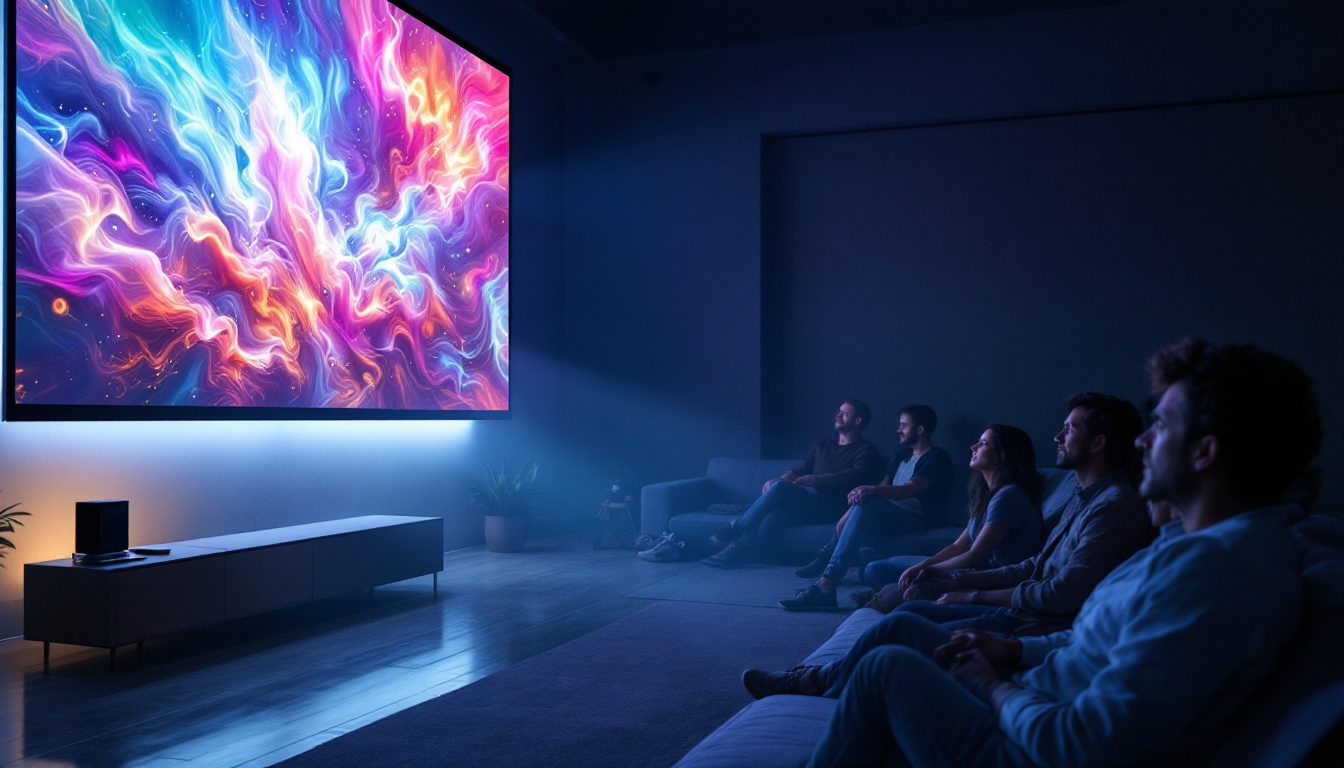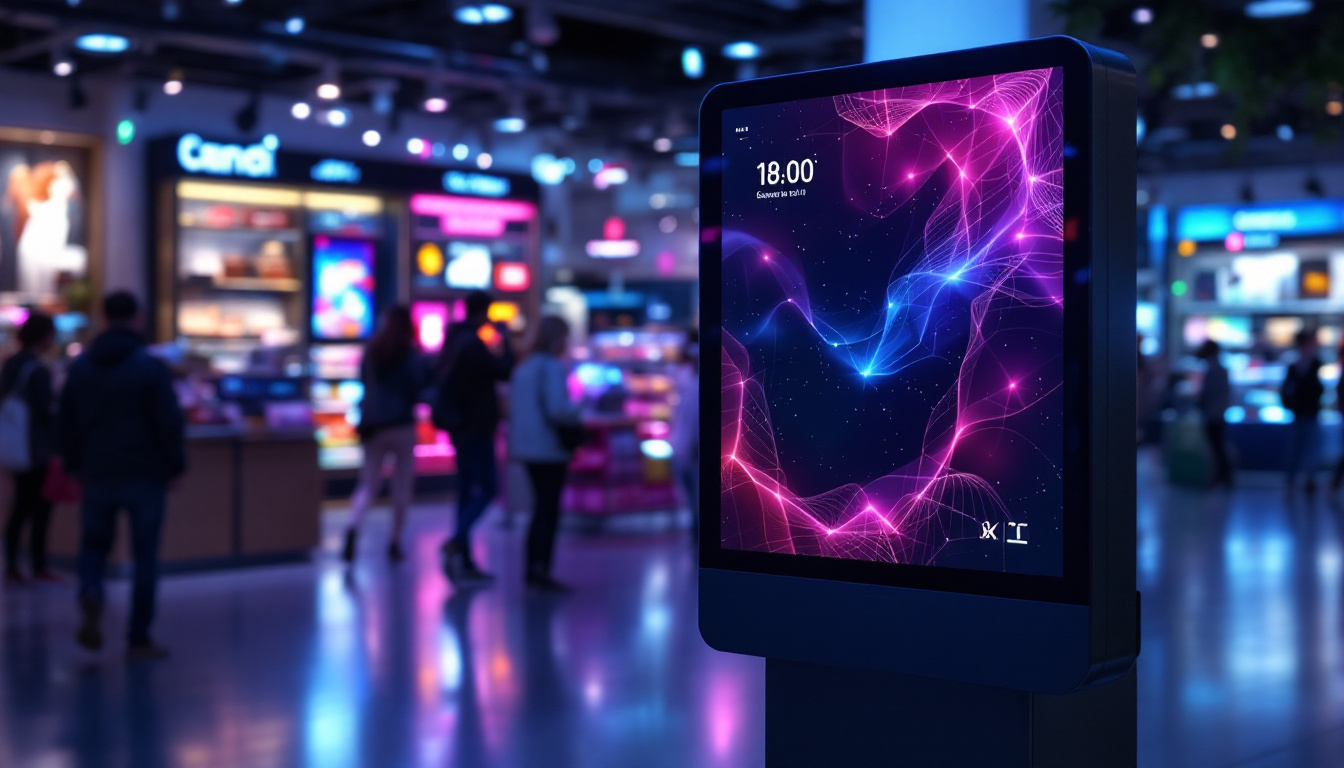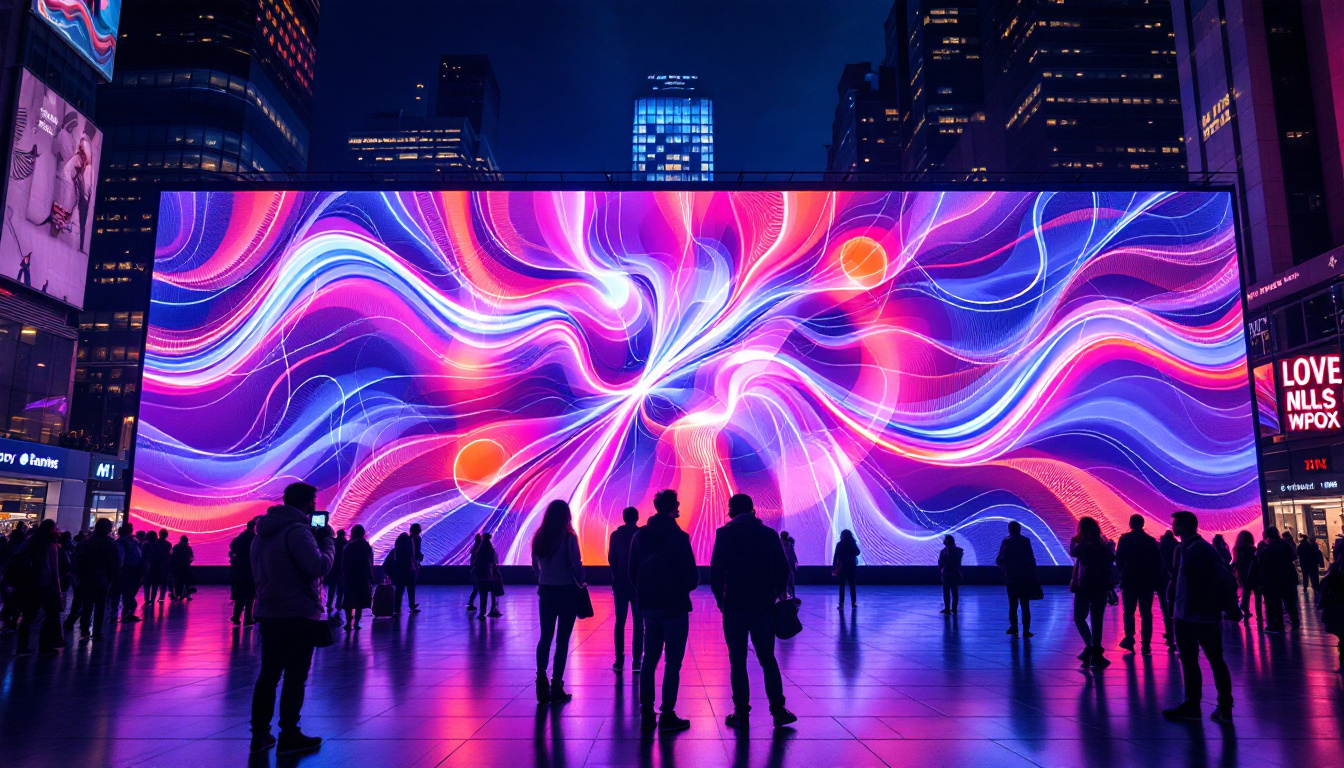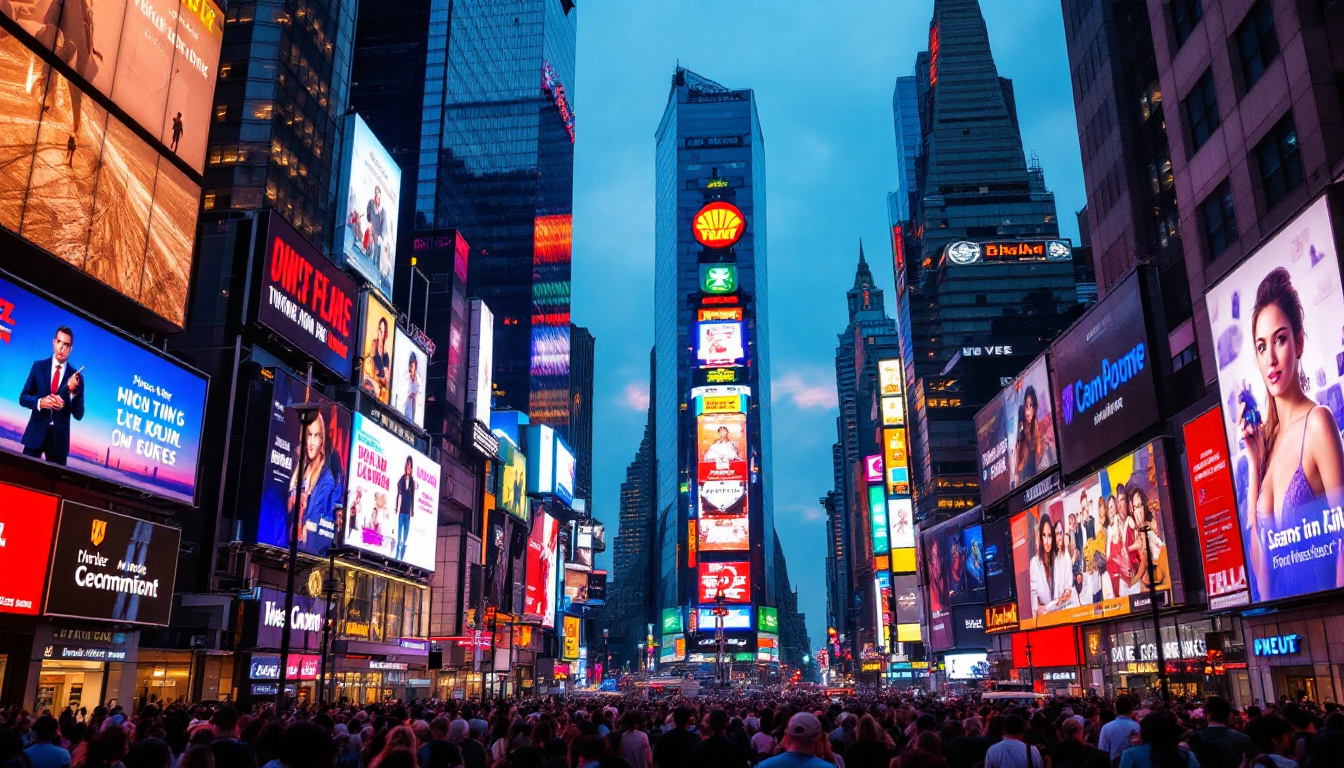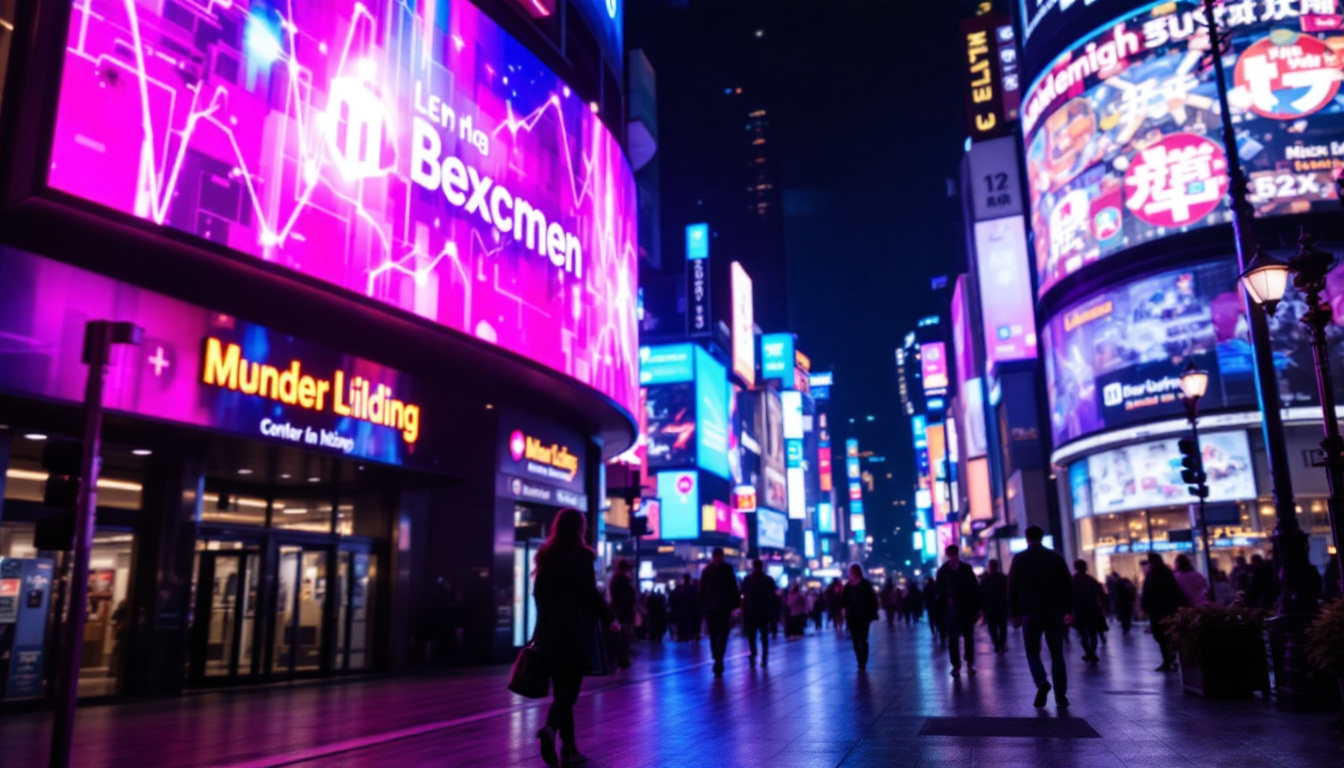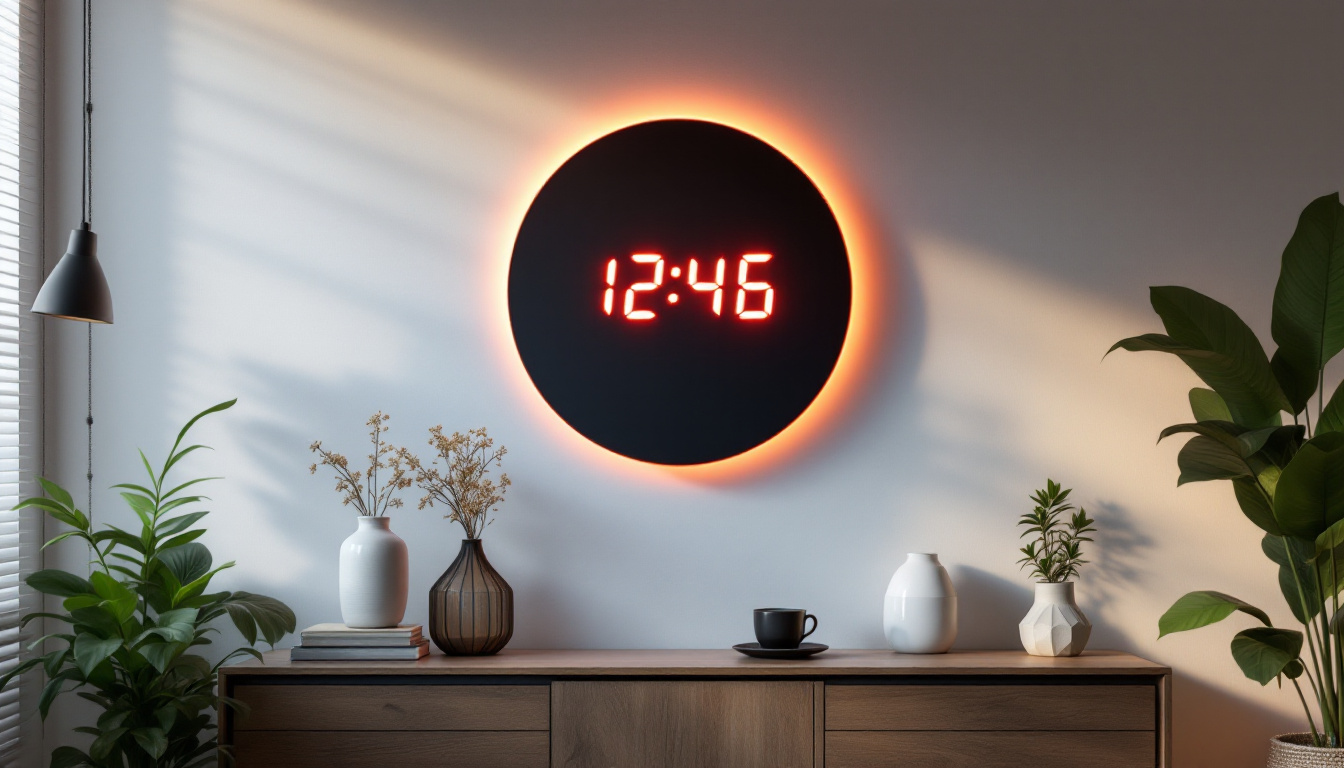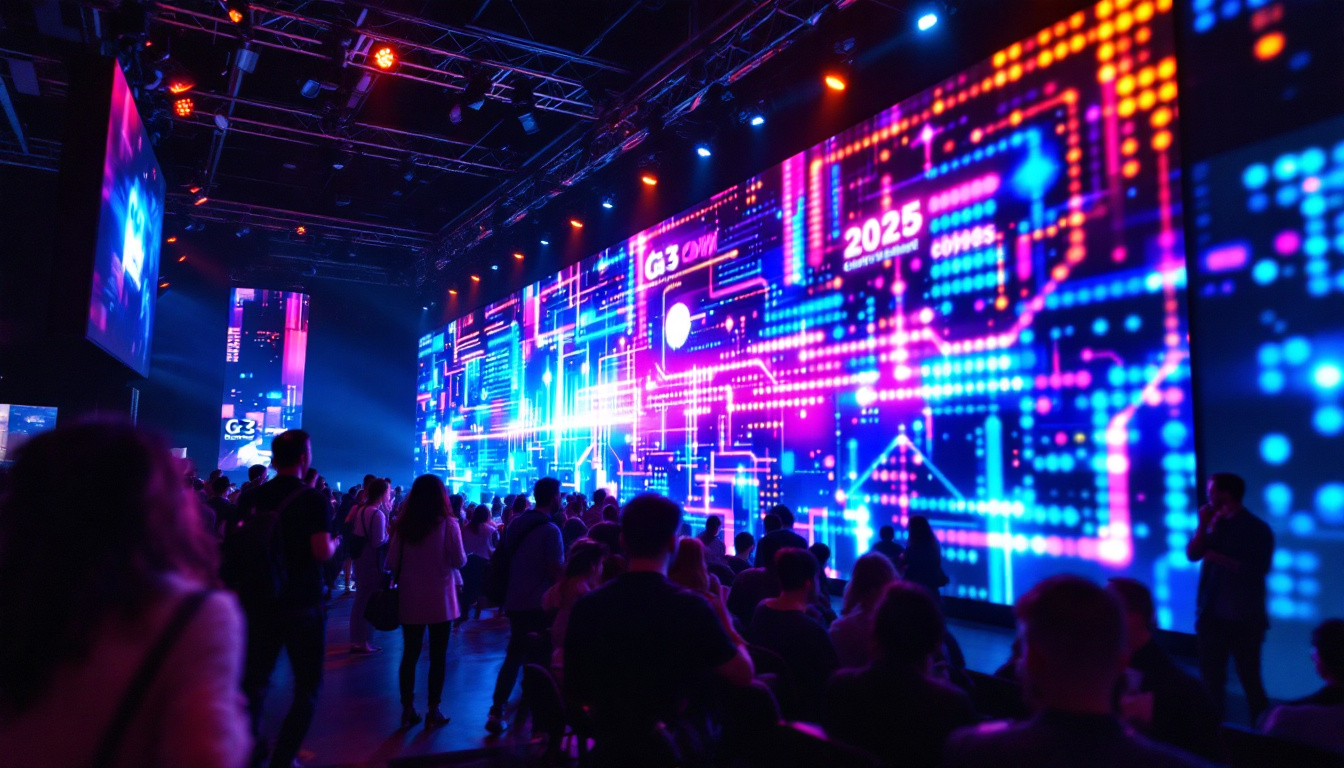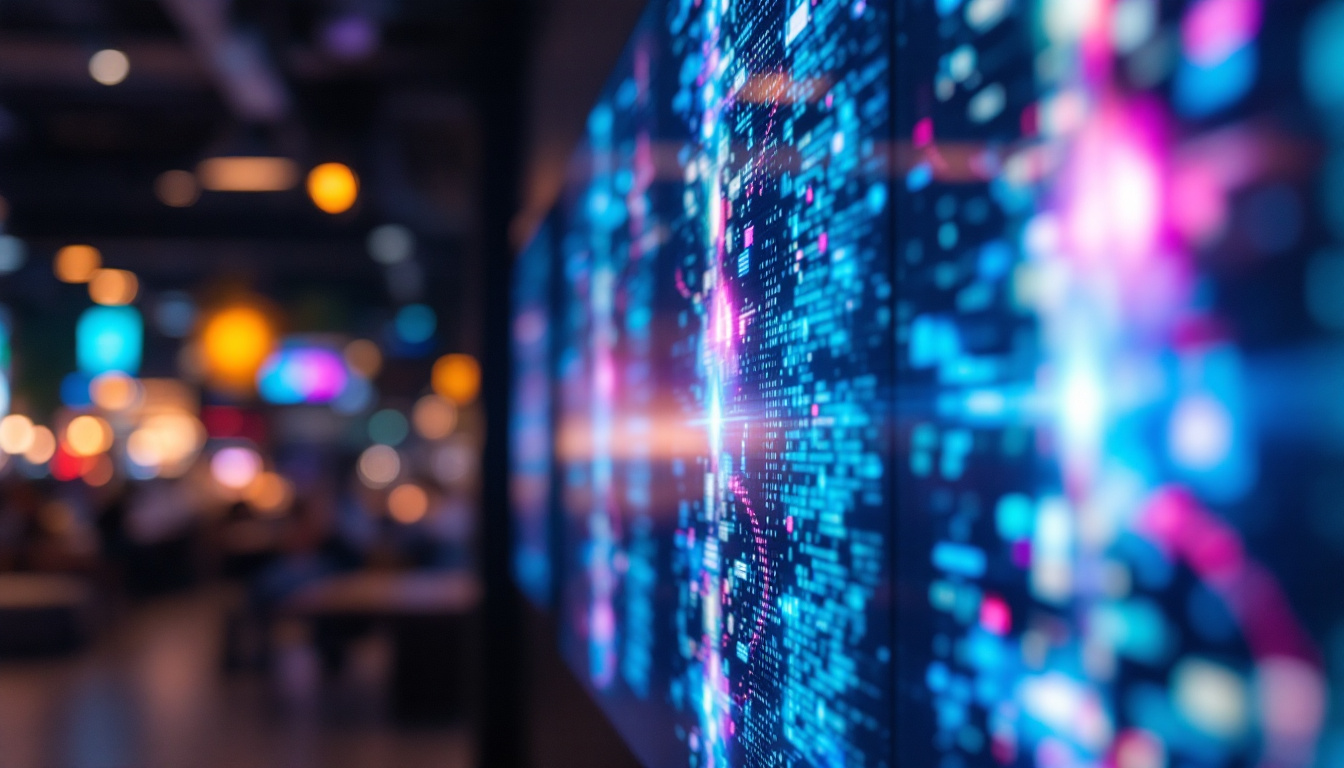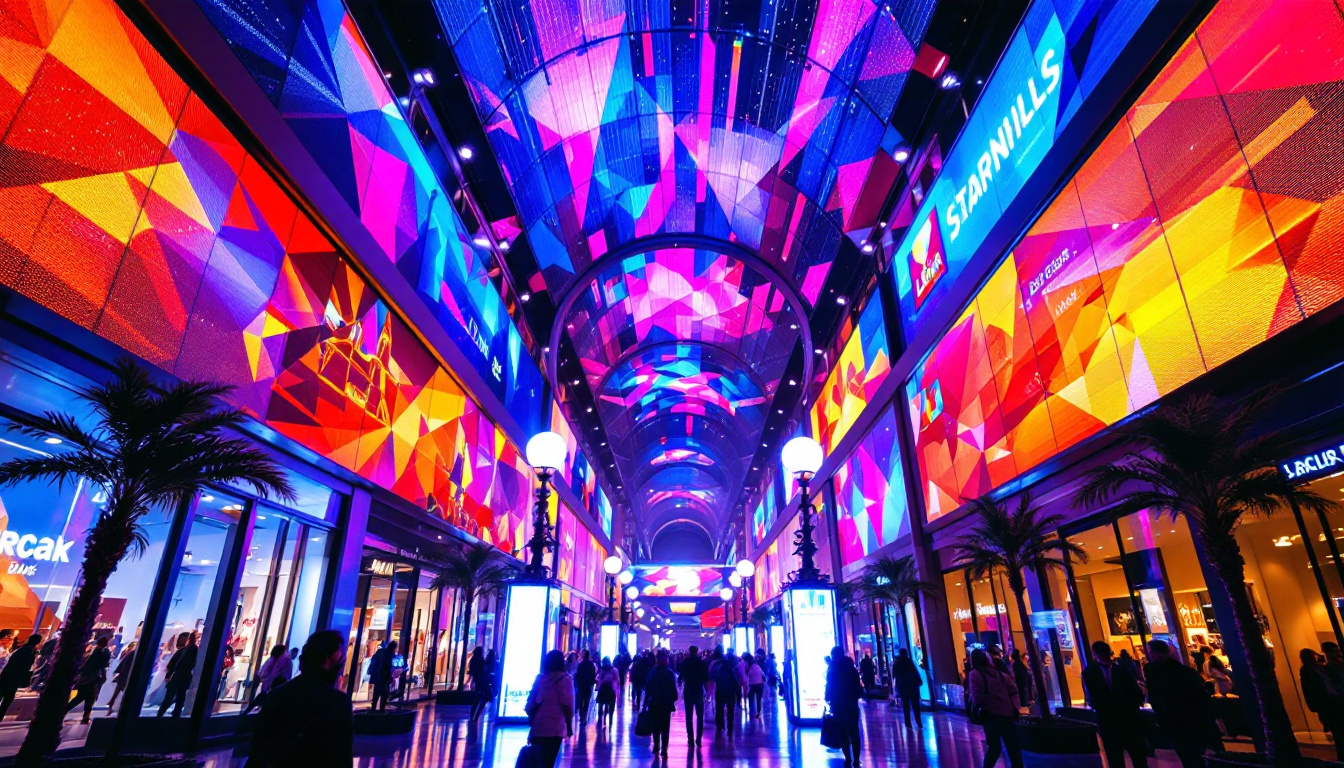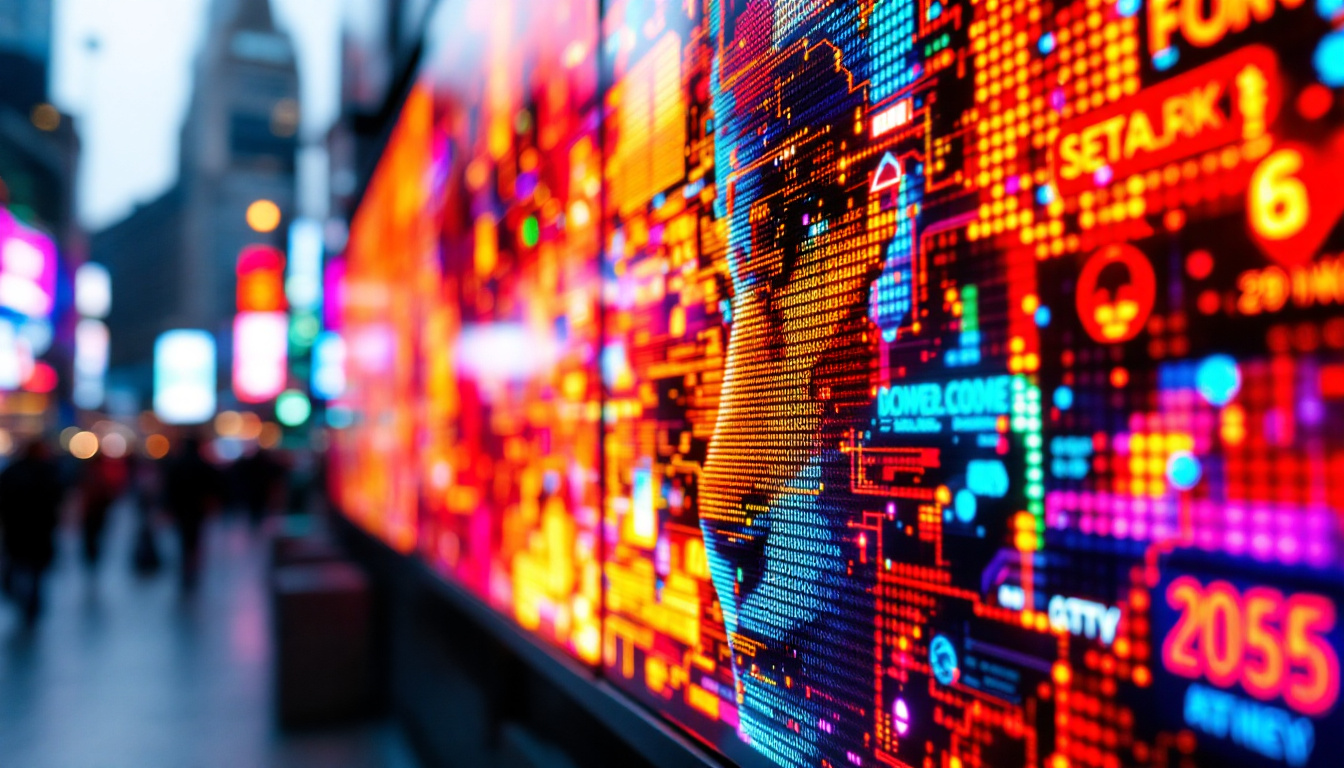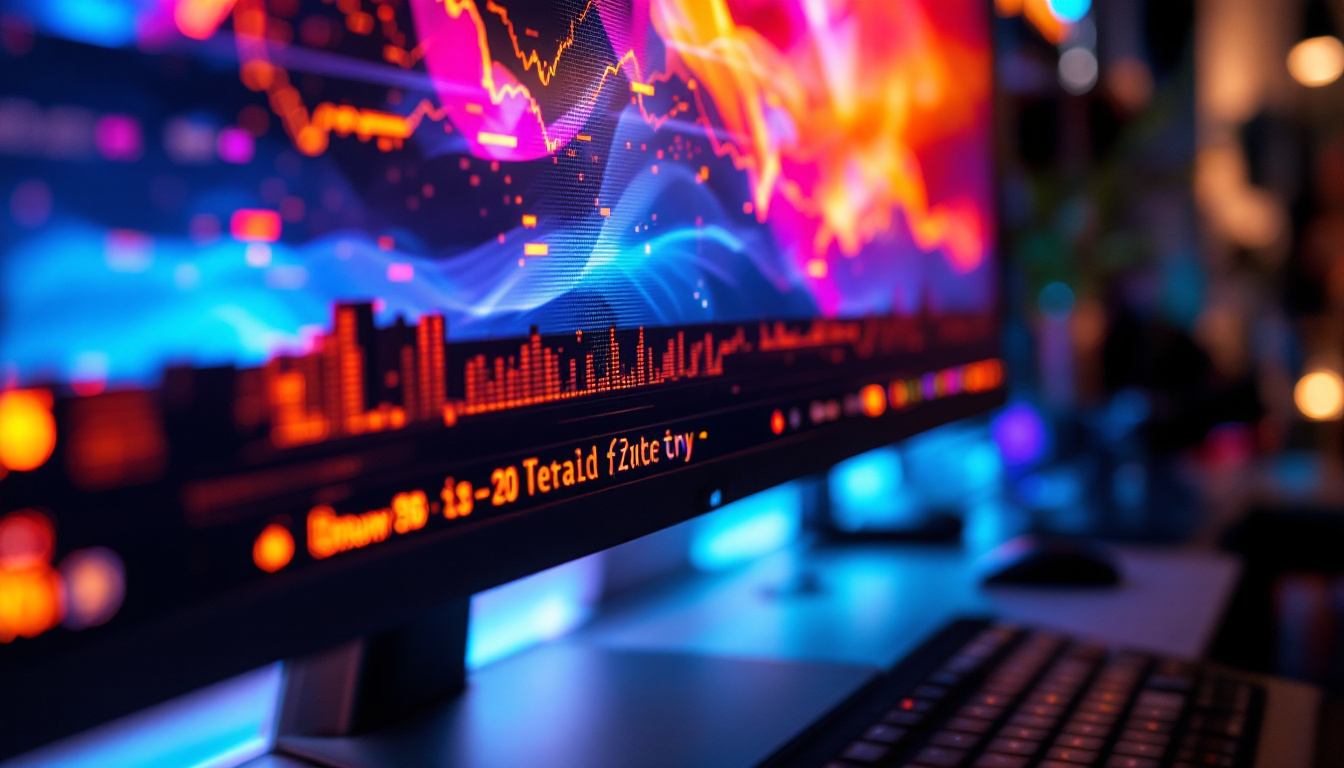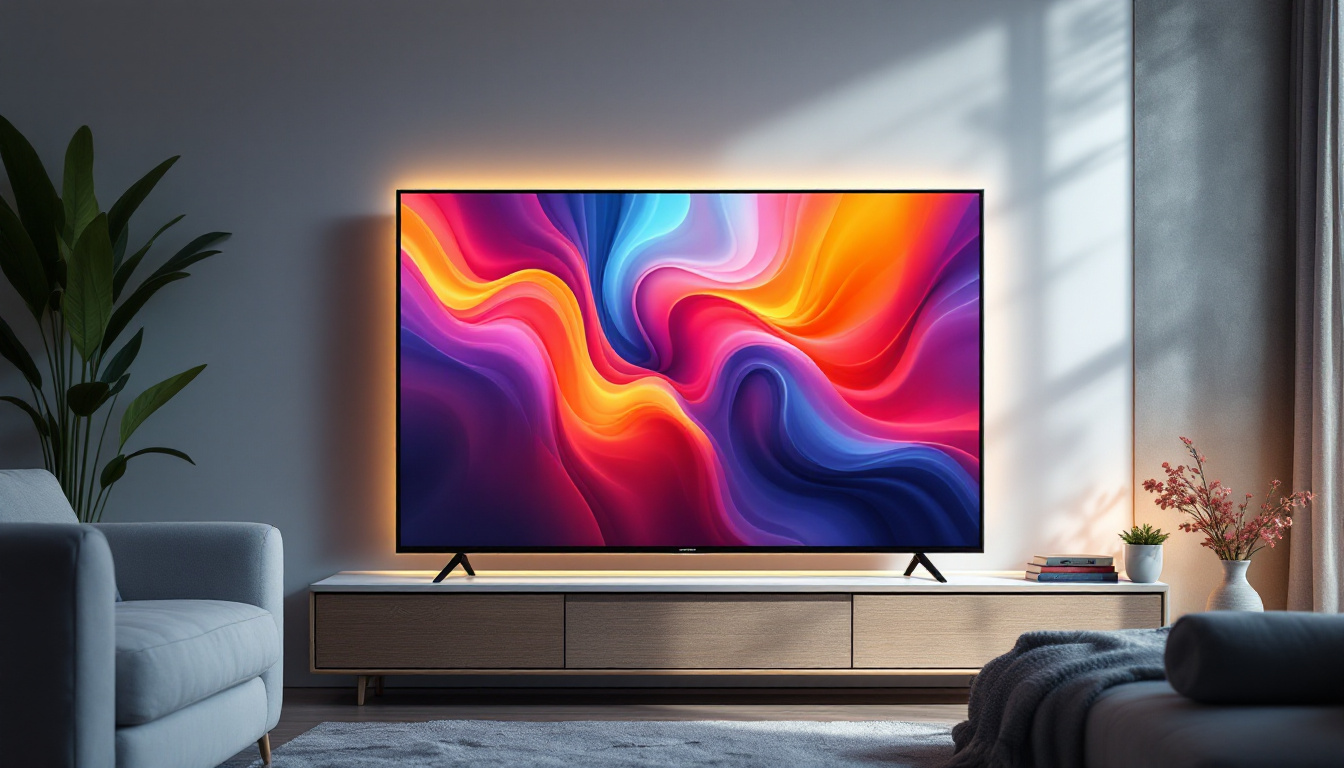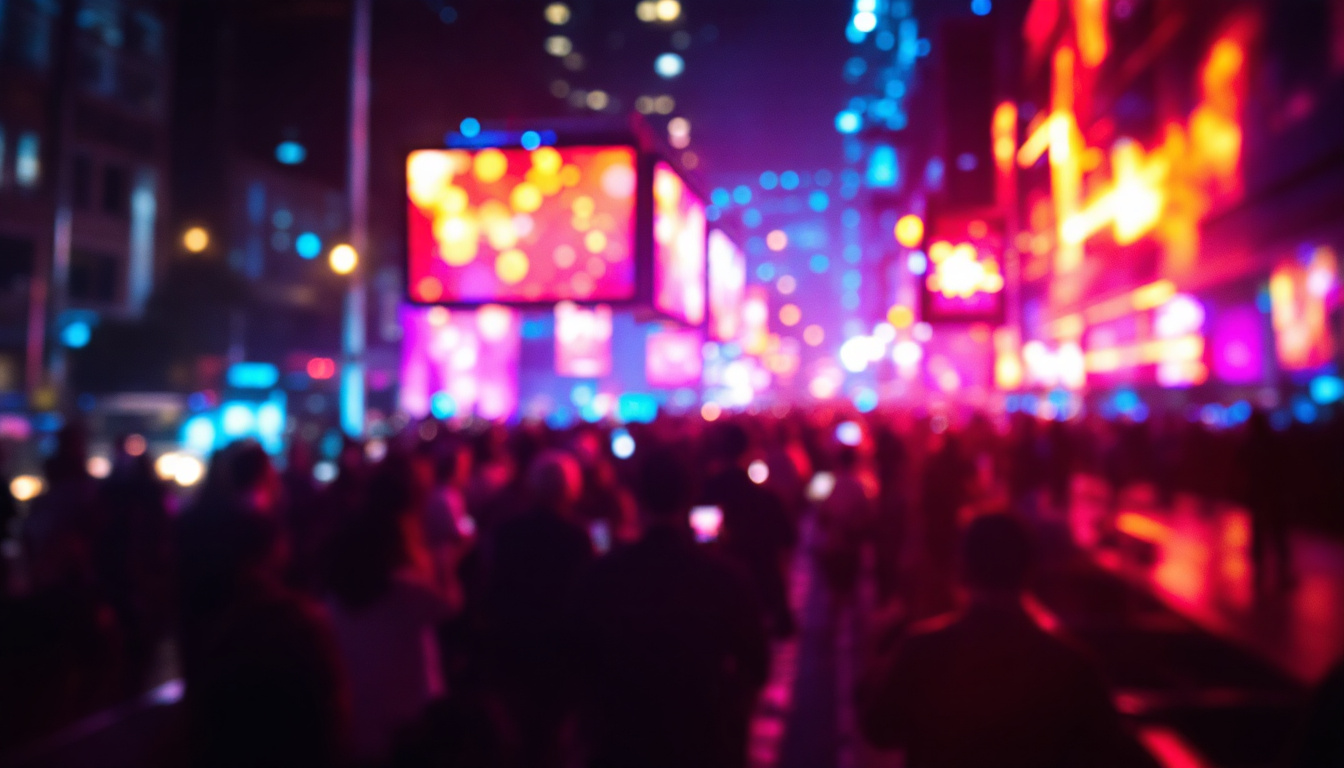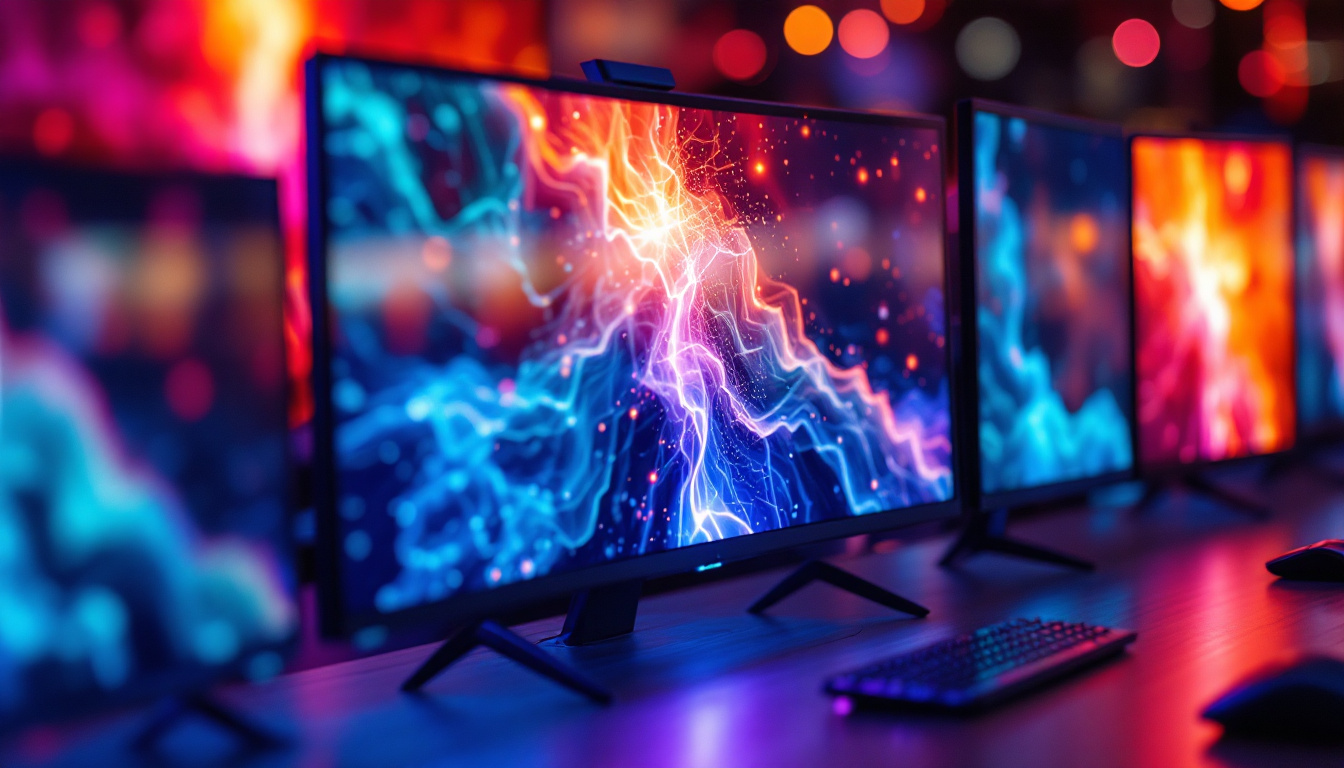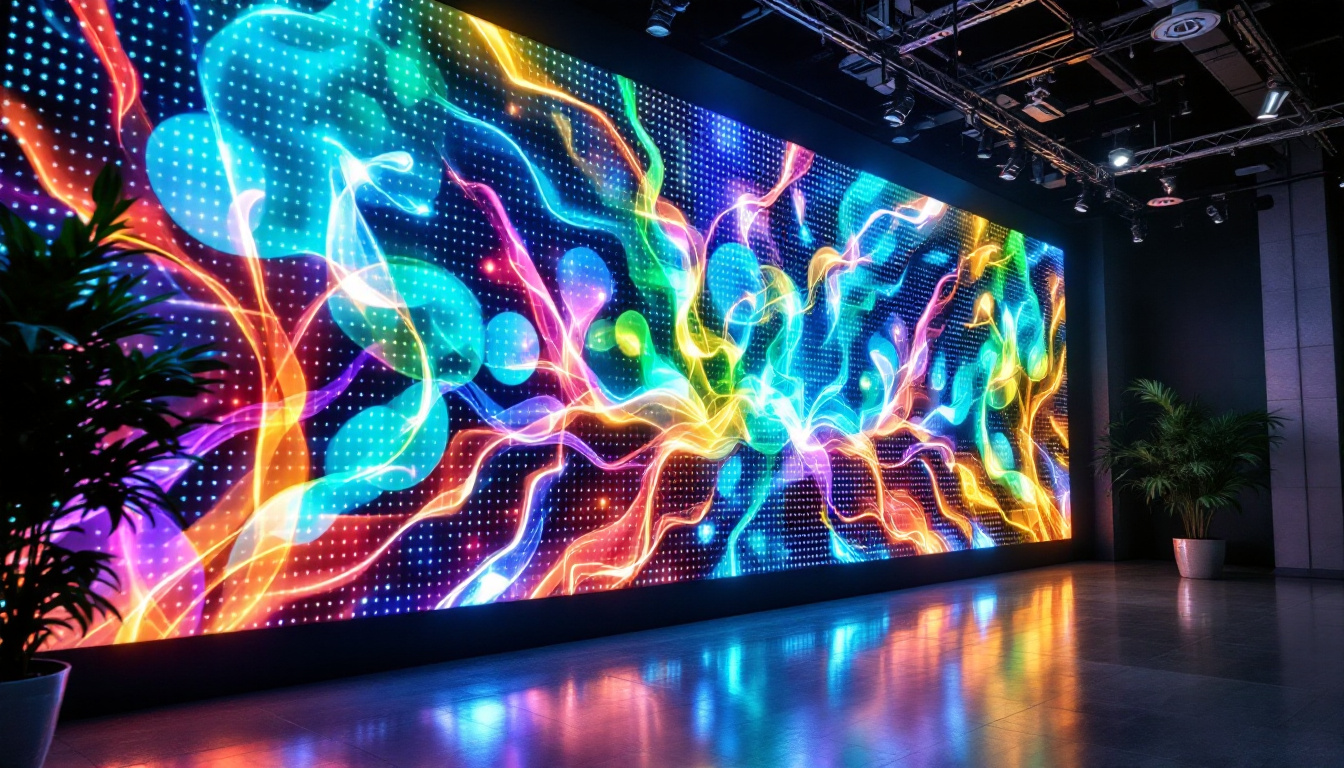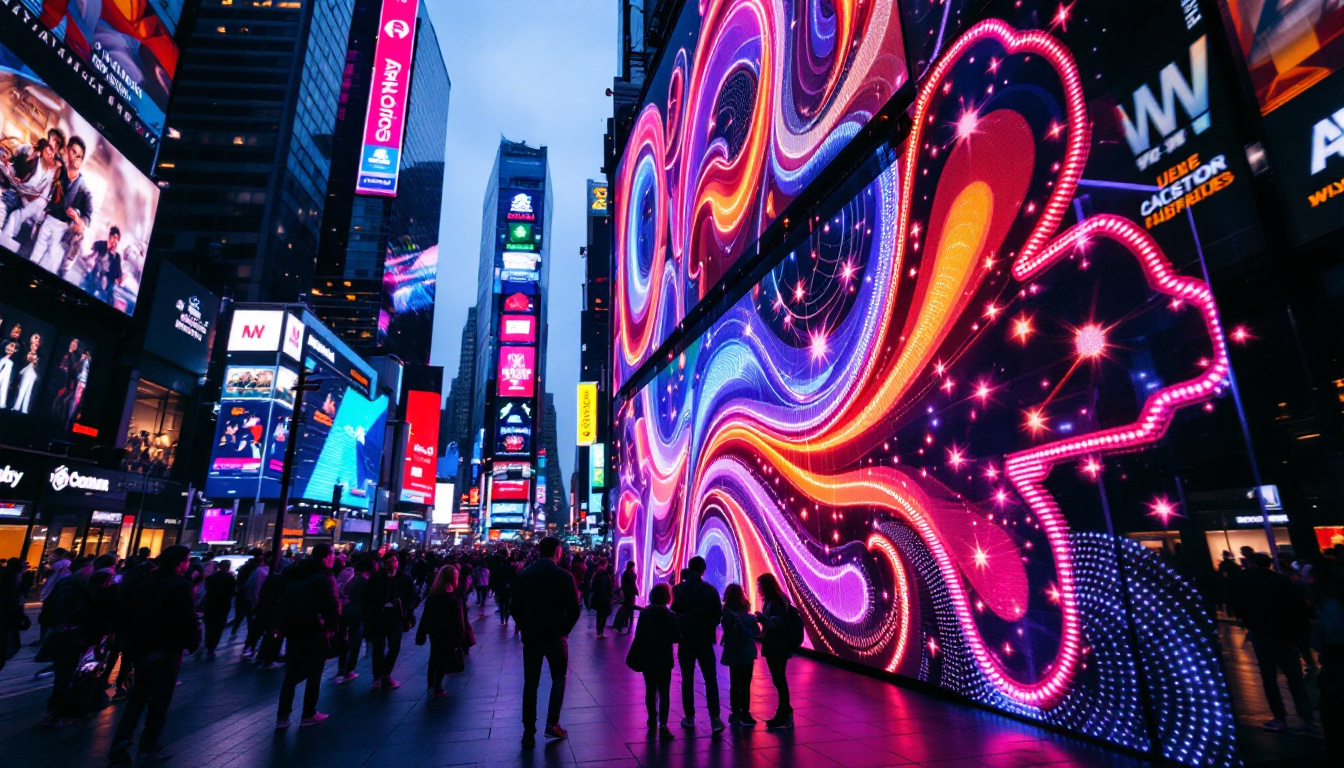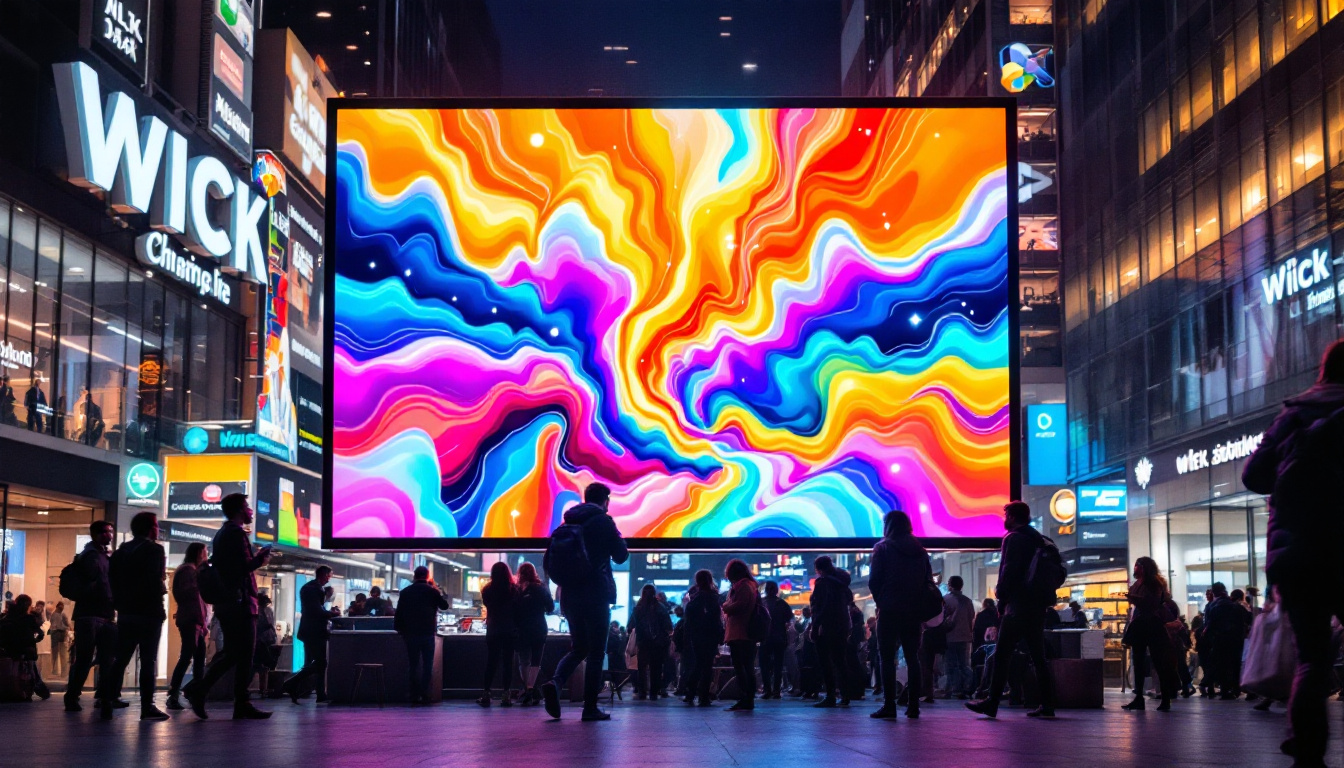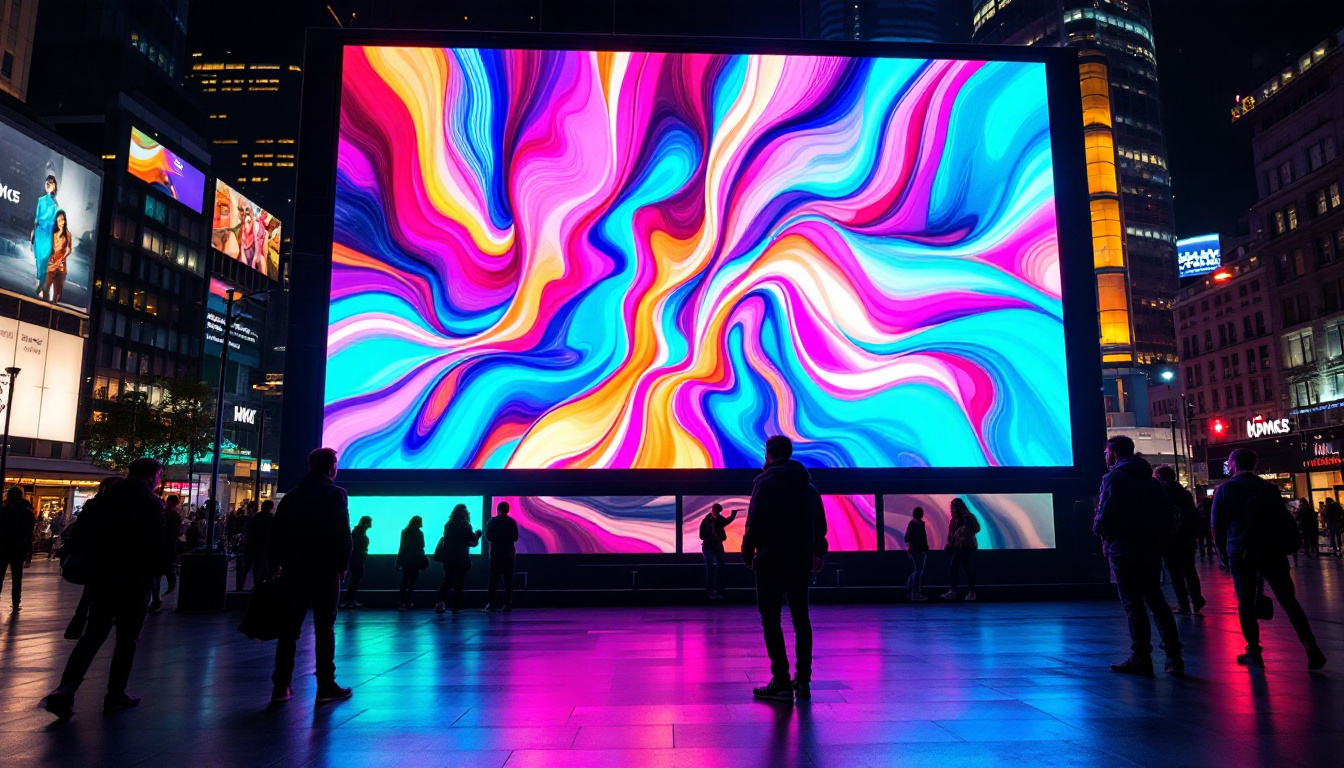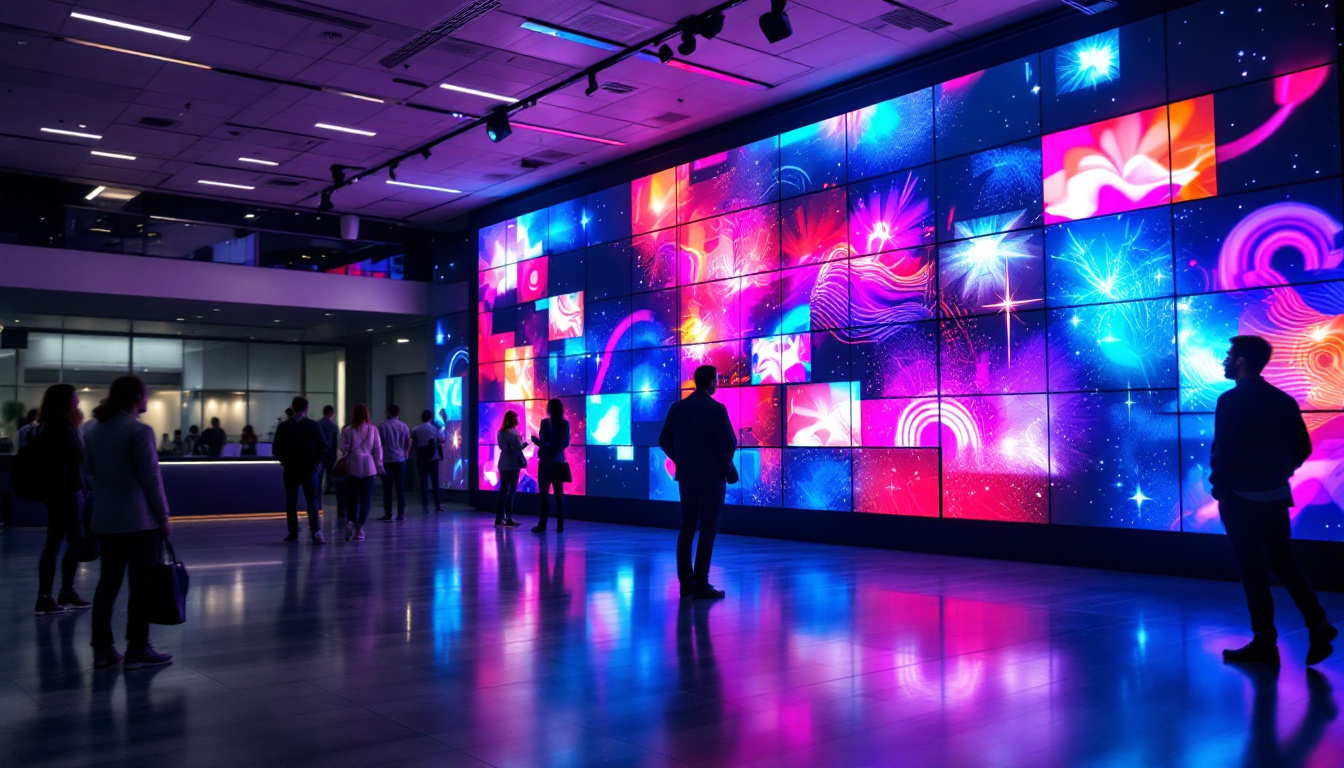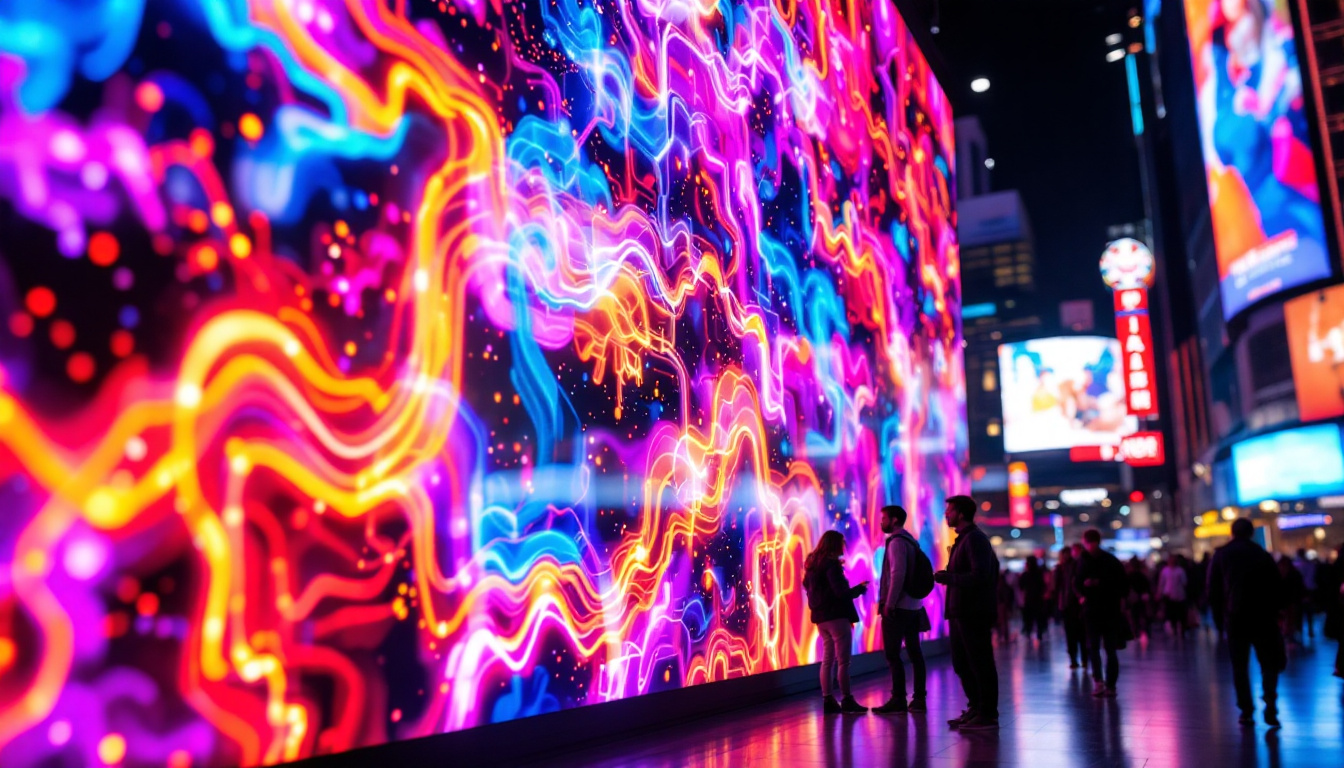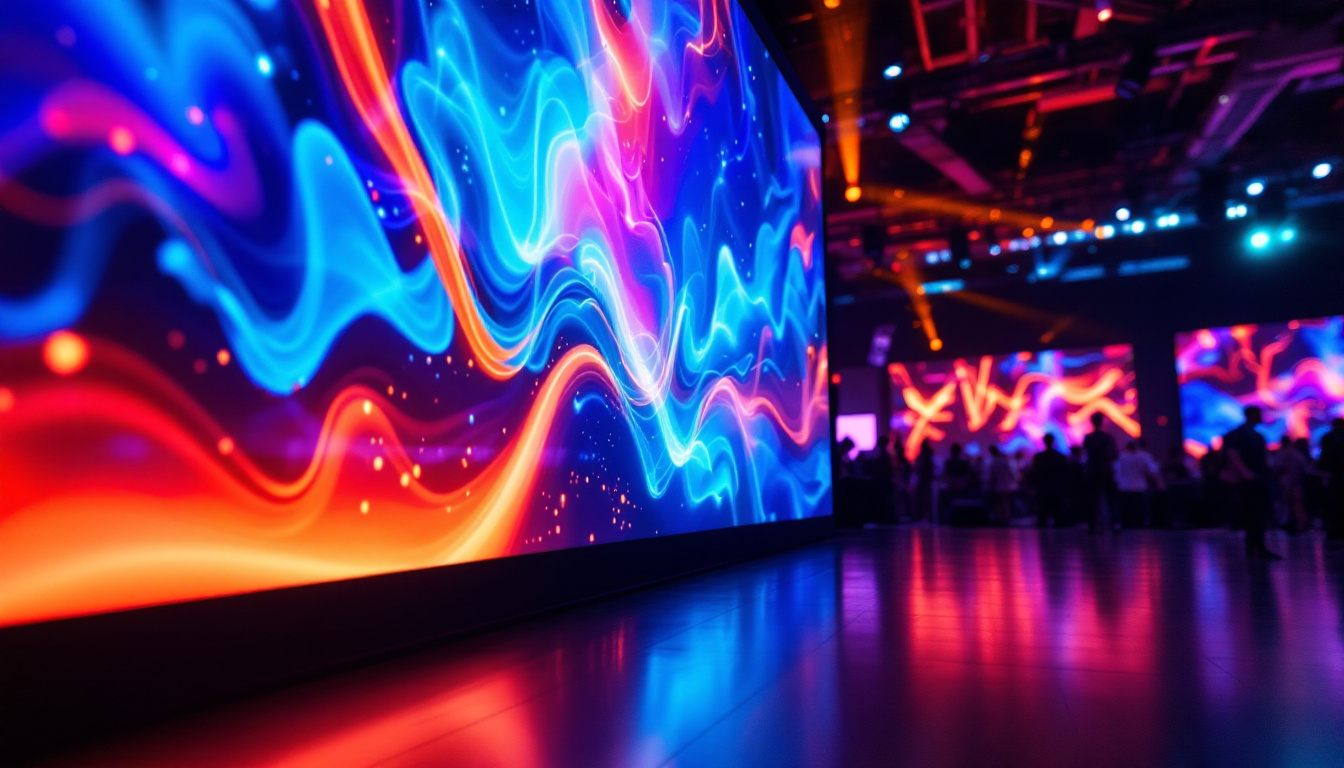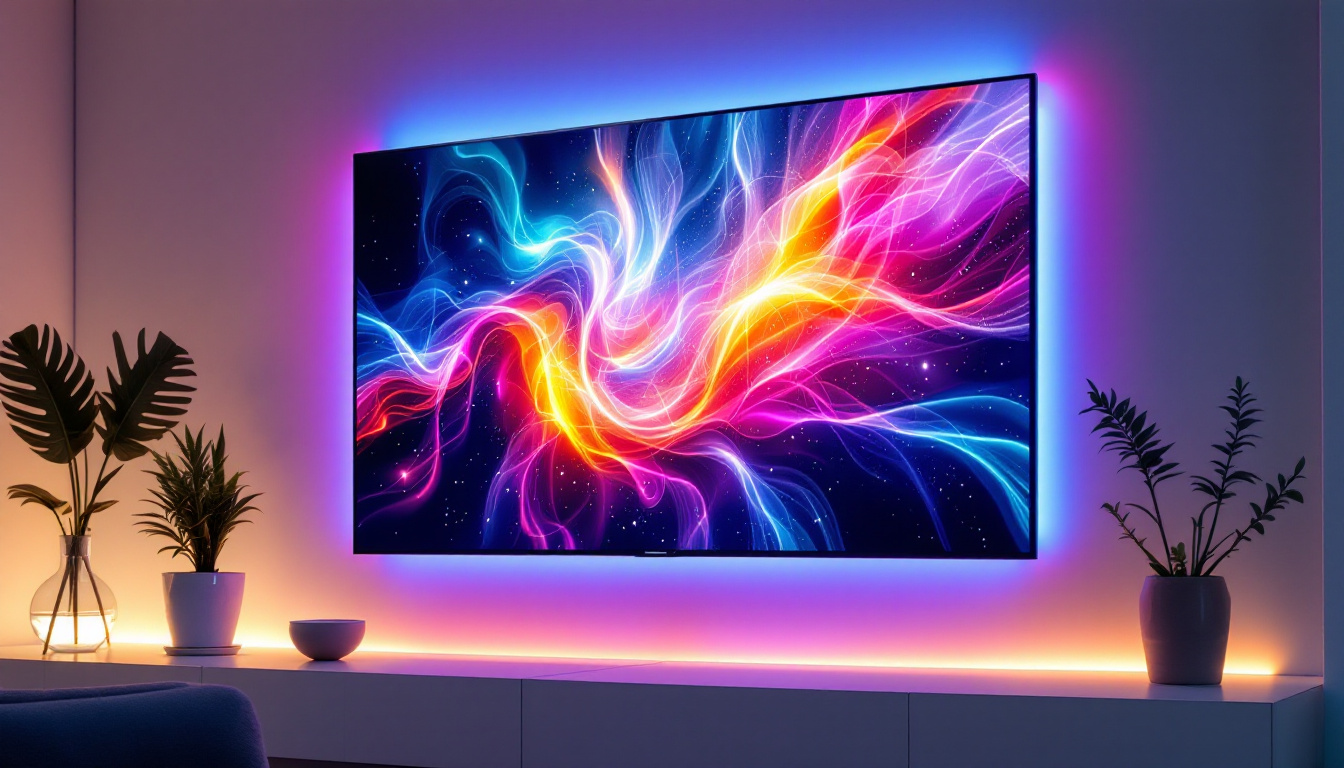In recent years, LED displays have transformed the way information is presented in both public and private spaces. From billboards to television screens, the versatility and efficiency of LED technology have made it a popular choice across various industries. This article delves into the intricacies of LED displays, exploring their functionality, applications, and the innovative concept of Led Cloud.
Understanding LED Technology
Light Emitting Diodes (LEDs) are semiconductor devices that emit light when an electric current passes through them. This technology has evolved significantly since its inception, leading to the development of high-quality displays that offer vibrant colors and sharp images. The versatility and efficiency of LEDs have made them a cornerstone in modern lighting and display technologies, paving the way for innovations across various industries.
How LEDs Work
At the core of LED technology is the principle of electroluminescence. When electrons move through a semiconductor material, they release energy in the form of photons, which is perceived as light. The color of the light emitted depends on the materials used in the semiconductor. By combining different colors of LEDs—typically red, green, and blue (RGB)—it is possible to create a full spectrum of colors, making LED displays highly versatile. This ability to mix colors not only enhances visual experiences but also allows for the creation of dynamic lighting effects that can be programmed for various applications, from entertainment to advertising.
Types of LED Displays
LED displays come in various forms, each suited for different applications. The most common types include:
- Direct View LED Displays: These displays consist of individual LEDs arranged in a matrix. They are often used for large outdoor billboards and signage.
- LED Backlit Displays: These screens use LEDs to illuminate an LCD panel from behind, enhancing brightness and color accuracy. They are commonly found in televisions and computer monitors.
- Organic LED (OLED) Displays: Utilizing organic compounds, OLED displays offer exceptional contrast and color depth. They are increasingly popular in smartphones and high-end televisions.
In addition to these common types, there are also specialized LED displays designed for specific purposes. For instance, MicroLED Displays are an emerging technology that offers even greater resolution and efficiency by using microscopic LEDs to create images. This technology promises to deliver stunning visuals with lower power consumption, making it ideal for future applications in virtual reality and augmented reality environments. Moreover, Flexible LED Displays are gaining traction in the market, allowing for curved or bendable screens that can fit unique designs and applications, such as wearable technology or innovative architectural features.
The rapid advancement in LED technology has also led to improvements in energy efficiency and lifespan. Modern LEDs consume significantly less power compared to traditional lighting options, which not only reduces electricity costs but also contributes to environmental sustainability. Furthermore, the lifespan of an LED can exceed 25,000 hours, making them a long-lasting solution for both residential and commercial lighting needs. As the demand for energy-efficient solutions continues to grow, the role of LED technology in our daily lives is expected to expand even further, influencing everything from smart home systems to urban lighting initiatives.
Applications of LED Displays
The versatility of LED displays has led to their widespread adoption in various sectors. Here are some notable applications:
Advertising and Marketing
One of the most prominent uses of LED displays is in advertising. Digital billboards and signage can be easily updated with new content, allowing businesses to promote their products and services dynamically. The bright, eye-catching visuals of LED displays attract attention, making them an effective marketing tool. Moreover, the ability to incorporate animations and videos can significantly enhance the message being conveyed, engaging potential customers in a way that static advertisements simply cannot. This adaptability not only increases the reach of marketing campaigns but also allows for targeted advertising based on time of day or audience demographics, optimizing the effectiveness of promotional efforts.
Entertainment and Events
In the entertainment industry, LED displays are used in concerts, festivals, and sporting events. Large screens provide audiences with a better view of performances and enhance the overall experience. Additionally, LED walls can create immersive environments, transforming venues into captivating spaces. The technology has evolved to include high-definition displays that offer stunning visuals and vibrant colors, making them ideal for live broadcasts and streaming events. Furthermore, the integration of LED displays with sound systems can create synchronized audio-visual experiences, heightening the emotional impact of performances and leaving lasting impressions on audiences.
Transportation and Wayfinding
LED displays play a crucial role in transportation systems, providing real-time information to passengers. Airports, train stations, and bus stops utilize LED screens to display arrival and departure times, enhancing the efficiency of travel. Furthermore, LED signage aids in wayfinding, helping individuals navigate complex environments. These displays can also be programmed to provide alerts and updates about delays or changes in schedules, ensuring that travelers are well-informed and can adjust their plans accordingly. In addition, the use of LED technology in traffic management systems, such as variable message signs, helps improve road safety by conveying important information to drivers, such as speed limits and accident alerts, thus contributing to smoother traffic flow and reduced congestion.
The Emergence of Led Cloud
As technology continues to evolve, the concept of Led Cloud has emerged, combining LED display technology with cloud computing. This innovative approach offers numerous advantages for businesses and organizations.
What is Led Cloud?
Led Cloud refers to a network of LED displays that are connected to a centralized cloud platform. This system allows for the remote management and control of multiple displays, enabling users to update content, monitor performance, and analyze data from a single interface. The flexibility of this technology means that users can deploy targeted advertising campaigns or informational displays across various locations without the need for physical presence, thus enhancing operational efficiency.
Benefits of Led Cloud
The integration of cloud technology with LED displays brings several benefits:
- Centralized Control: Users can manage multiple displays across different locations from one platform, streamlining operations and reducing the need for on-site personnel.
- Real-Time Updates: Content can be updated instantly, allowing businesses to respond to changing circumstances or promotions quickly.
- Data Analytics: Led Cloud systems can collect data on viewer engagement and display performance, providing valuable insights that can inform marketing strategies.
Moreover, the scalability of Led Cloud solutions means that businesses can start with a few displays and expand their network as needed, adapting to growth without significant upfront investment. This adaptability is particularly beneficial for seasonal businesses or those that experience fluctuating demand. Additionally, the environmental impact of LED technology cannot be overlooked; these displays consume less energy compared to traditional signage, making them a more sustainable choice in an increasingly eco-conscious market.
Furthermore, Led Cloud technology fosters enhanced interactivity. By integrating features such as QR codes or touch-screen capabilities, businesses can create engaging experiences that encourage customer interaction. This not only boosts viewer engagement but also allows for the collection of more nuanced data regarding consumer preferences and behaviors, further refining marketing efforts. As industries continue to explore innovative ways to connect with their audiences, the potential applications of Led Cloud are virtually limitless, paving the way for a new era of dynamic digital communication.
Challenges and Considerations
While LED displays and Led Cloud technology offer numerous advantages, there are also challenges that need to be addressed.
Cost and Investment
Implementing LED displays, particularly in large-scale applications, can require significant upfront investment. Businesses must carefully consider their budget and the potential return on investment when deciding to adopt this technology.
Maintenance and Reliability
Like any technology, LED displays require maintenance to ensure optimal performance. Regular checks and servicing are essential to prevent issues such as pixel failure or color inconsistencies. Additionally, reliance on cloud technology means that a stable internet connection is crucial for functionality.
Content Management
Creating engaging content for LED displays can be a challenge. Businesses must invest time and resources into developing high-quality visuals that capture the attention of their audience. Furthermore, ensuring that content is relevant and timely is essential for maximizing viewer engagement.
The Future of LED Displays and Led Cloud
The future of LED displays and Led Cloud technology looks promising, with ongoing advancements expected to enhance their capabilities further.
Technological Innovations
As technology continues to advance, LED displays are becoming more energy-efficient and capable of producing higher resolutions. Innovations such as microLED technology promise to deliver even better performance, with improved brightness and color accuracy.
Integration with Other Technologies
LED displays are increasingly being integrated with other technologies, such as augmented reality (AR) and artificial intelligence (AI). This convergence can lead to more interactive and personalized experiences for viewers, further enhancing the effectiveness of LED displays in various applications.
Environmental Considerations
As sustainability becomes a priority for many organizations, the environmental impact of LED displays is being scrutinized. Future developments may focus on creating more eco-friendly displays, utilizing recyclable materials and reducing energy consumption.
Conclusion
LED displays have revolutionized the way information is communicated, offering vibrant visuals and dynamic content delivery. The emergence of Led Cloud technology has further enhanced the capabilities of LED displays, providing centralized control and real-time updates. While challenges exist, the benefits of LED displays and Led Cloud make them an attractive option for businesses across various sectors. As technology continues to evolve, the future of LED displays promises even greater innovations and opportunities.
In summary, understanding the functionality, applications, and future potential of LED displays is essential for businesses looking to leverage this technology effectively. By staying informed about advancements in LED technology and exploring the possibilities offered by Led Cloud, organizations can position themselves at the forefront of digital communication.
Discover the Future of Visual Communication with LumenMatrix
Ready to elevate your brand’s presence and captivate your audience with the most advanced LED display technology? LumenMatrix is at the forefront of innovation, offering a wide array of LED display solutions that promise to transform your visual communication. From Indoor and Outdoor LED Wall Displays to specialized options like Vehicle, Sports, and Floor LED Displays, our products are designed to make a lasting impact. Embrace the power of Led Cloud and join the revolution in digital signage. Check out LumenMatrix LED Display Solutions today and see your message come to life in ways you never imagined.

